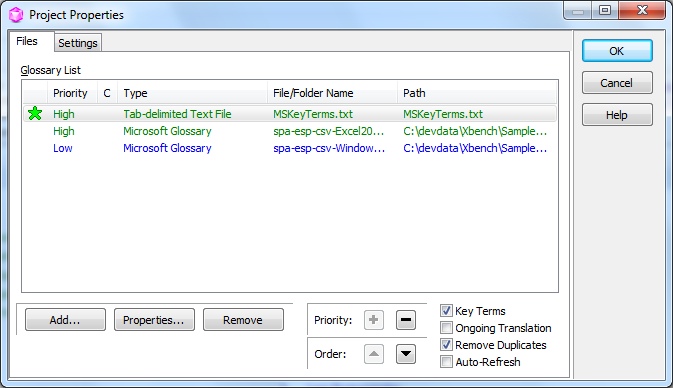
This entry was posted in Blog (EN) and tagged Productivity Tools. Update: There is now also an 'XLIFF Sync' PowerShell module This project originated from the need for a tool to automatically merge/synchronize XLIFF translation files that are in the OASIS specification. For example, we can contribute by requesting new features here. A VSCode extension to keep XLIFF translation files in sync with a specified, automatically generated base-XLIFF file. But I believe that Checkmate still promising and worth to try, and we need to support its development.


These lack of features, of course, won’t satisfy the professional translation industry. Still there are so many errors left undetected: source/target inconsistency, numeric mismatch, different end punctuation, all uppercase and/or camel words, terminology check still an experimental feature, etc. The QA options provided by the Checkmate are almost similar to Xbench’s, but I don’t think that it is really possible to use Checkmate as a replacement for Xbench in the near future-that is why still use Xbench. I have been using Checkmate for several of my tiny projects recently. A simple config. If a plugin folder does not contain a config.xml file, PYTHA will generate a bare-bones config file for you (this is the recommended way to create this file for your plugin). Enterprises appreciate tailor-made memoQ features such as flexible workflow management, easy project tracking, automated quality checks, advanced reports, customizability, connectivity, and much more. A config.xml file is a necessary part of any PYTHA plugin. So now, is it really possible to replace Xbench with Checkmate? Manage and automate your localization processes on a global scale with the memoQ translation management system. Select the Preserve dont add if not originally. If you choose XML format, then you can import it to Excel to make proper adjustment e.g. SDL Trados adds additional information to XLIFF documents that are not a native part of an MXLIFF document.

Choose your preferred format and don’t forget to set the path of the report file, e.g. There you will find Format of the report option. You can choose the preferred format from menu Issues – Edit Configurations – Other Settings tab. And, you can also set the Checkmate so that it re-checks the files everytime you make changes to the files by going to File – Session Settings menu, then give a check mark to the Re-check documents automatically when they change option.Īfter making proper revision based on the errors found, then we can export the QA result into HTML, tab-delimited text, or XML format. segments with missing number or segments with missing translation. You can also filter the QA result to display the errors found so you can focus fixing segments with similar errors, e.g. Not only can the files be exported from Memsource and opened in the Xbench, ApSIC has also developed a connector to provide instant access by using our.


 0 kommentar(er)
0 kommentar(er)
